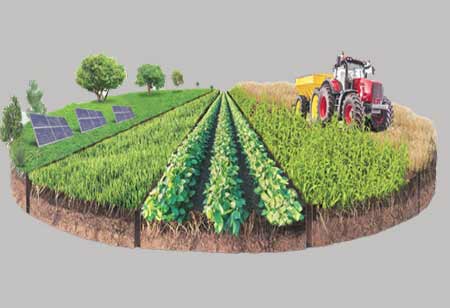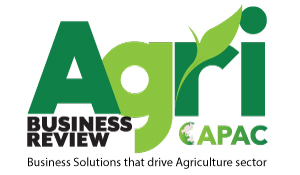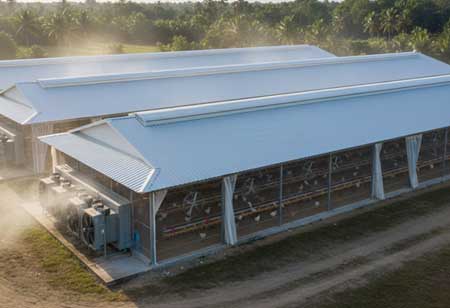Thank you for Subscribing to Agri Business Review Weekly Brief
Export-Ready Agribusiness: Strategies for Scaling in Global Markets in APAC
The Asia-Pacific region's growing demand for high-value agricultural products drives the need for export readiness and innovation, emphasizing sustainability and strategic partnerships for global competitiveness.

By
Agri Business Review | Thursday, September 04, 2025
Stay ahead of the industry with exclusive feature stories on the top companies, expert insights and the latest news delivered straight to your inbox. Subscribe today.
Fremont, CA: The Asia-Pacific (APAC) region, home to over 4.5 billion people, is a dynamic and burgeoning market for agricultural products. With rising incomes, a growing middle class, and rapid urbanization, consumer demand is shifting towards high-value commodities, processed foods, and niche products. For agribusinesses in APAC, becoming "export-ready" and strategically scaling operations is no longer an option—it's an imperative for sustainable growth.
The APAC Advantage and the Export Imperative
The Asia-Pacific region plays a pivotal role in global agricultural trade, yet its agri-food systems are under increasing strain from climate change, supply chain vulnerabilities, and infrastructure limitations. At the same time, these challenges open avenues for innovation and export-oriented growth. Intra-regional trade remains a key driver, with Australia and New Zealand serving as major suppliers to Southeast Asia, while emerging economies such as Vietnam and Thailand expand their export portfolios beyond traditional crops. Rising incomes across the region are also reshaping consumer demand, fueling greater interest in meat, dairy, fruits, vegetables, and convenience-oriented value-added products. Despite these trends, a significant share of small and medium-sized enterprises (SMEs) remain underprepared for international markets, underscoring substantial untapped potential for businesses to develop the capabilities needed to compete globally.
Core Strategies for Export Readiness and Scaling
Successfully scaling in global markets requires a holistic approach that connects every stage of the value chain, from farm to consumer. A critical first step is developing strong market intelligence and strategic positioning. Thorough market research is crucial for identifying high-demand destinations with favorable trade agreements, while also analyzing local consumer preferences, cultural nuances, and linguistic differences. Adapting packaging and branding to suit local expectations can significantly enhance market acceptance. Targeting niche segments is equally essential, as it enables exporters to differentiate products and avoid direct competition. Beyond individual products, positioning a collective “Brand APAC” that emphasizes sustainability, provenance, and quality resonates strongly with consumers in developed markets who are increasingly concerned with environmental and social impact.
International markets require strict adherence to global food safety and quality standards, including HACCP and ISO certifications, as well as compliance with country-specific import requirements, documentation, and testing protocols. Building trust also requires transparency, and digital tools like blockchain now enable end-to-end traceability, both satisfying regulatory demands and enhancing consumer confidence. Investment in post-harvest management is equally crucial, as a significant portion of agricultural losses in APAC stem from poor storage and handling. Improvements in cold-chain logistics, modern storage facilities, and resilient farming systems are vital to reducing waste while maintaining product quality.
Digital transformation is redefining agriculture and trade, offering exporters powerful tools to scale efficiently. Precision agriculture, driven by IoT sensors, drones, and data analytics, helps optimize crop yields, manage resources, and reduce environmental impacts while bolstering sustainability credentials. At the same time, digital platforms and e-commerce have unlocked new distribution channels, enabling agribusinesses to reach broader audiences through online marketplaces and mobile-based models in the region. Supply chain digitization is equally transformative, streamlining logistics and trade processes from inventory management to customs clearance.
Building strategic partnerships and networks is critical for long-term success in international markets. Public-private partnerships can provide vital support in navigating certification barriers, securing infrastructure, and accessing export promotion programs such as India’s APEDA initiatives. Regional export networks offer another pathway, allowing businesses to first expand into geographically or culturally proximate markets—as demonstrated by Vietnam’s strategy—before scaling globally. At the grassroots level, collaborating with local farmers and suppliers through models such as contract farming ensures a consistent supply, high product quality, and inclusive growth by empowering smallholder farmers.
By focusing on a farmer-centric approach, leveraging technology, building robust supply chains, and fostering strong collaboration between the public and private sectors, agribusinesses in the APAC region can transition from being local producers to global players. The future of the region's food security and economic prosperity hinges on its ability to build an export-ready, resilient, and sustainable agricultural sector.





